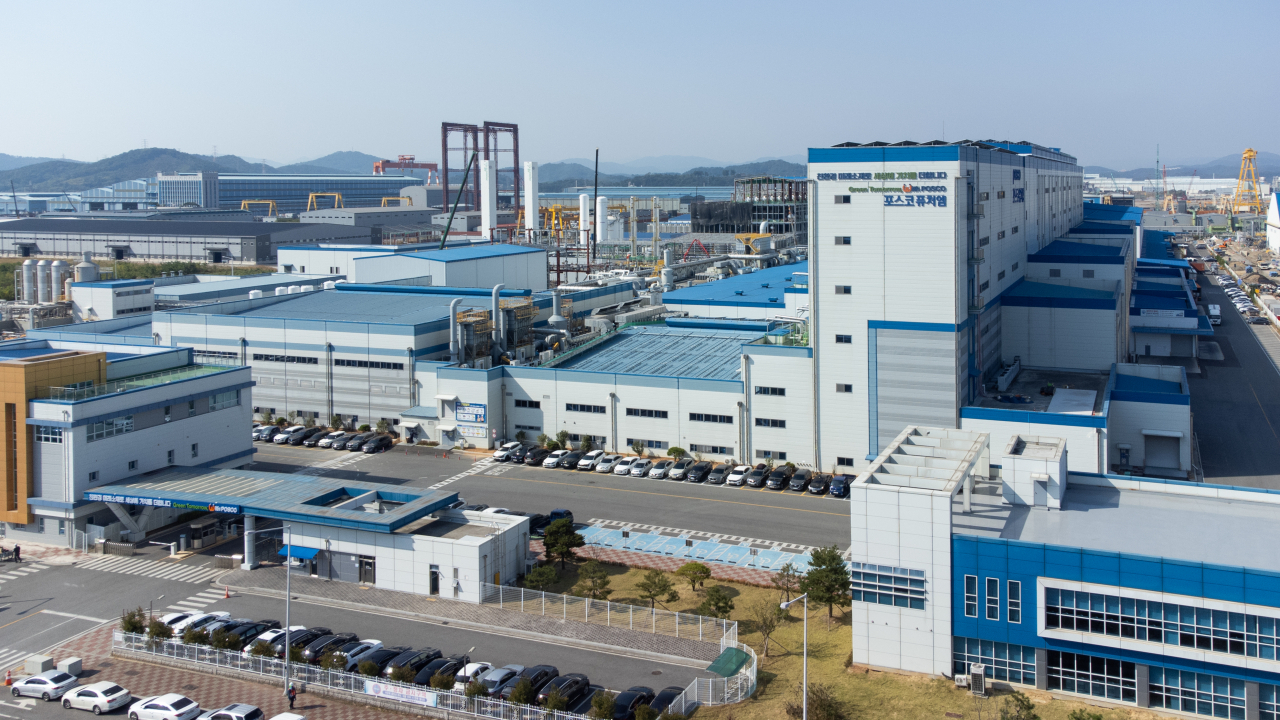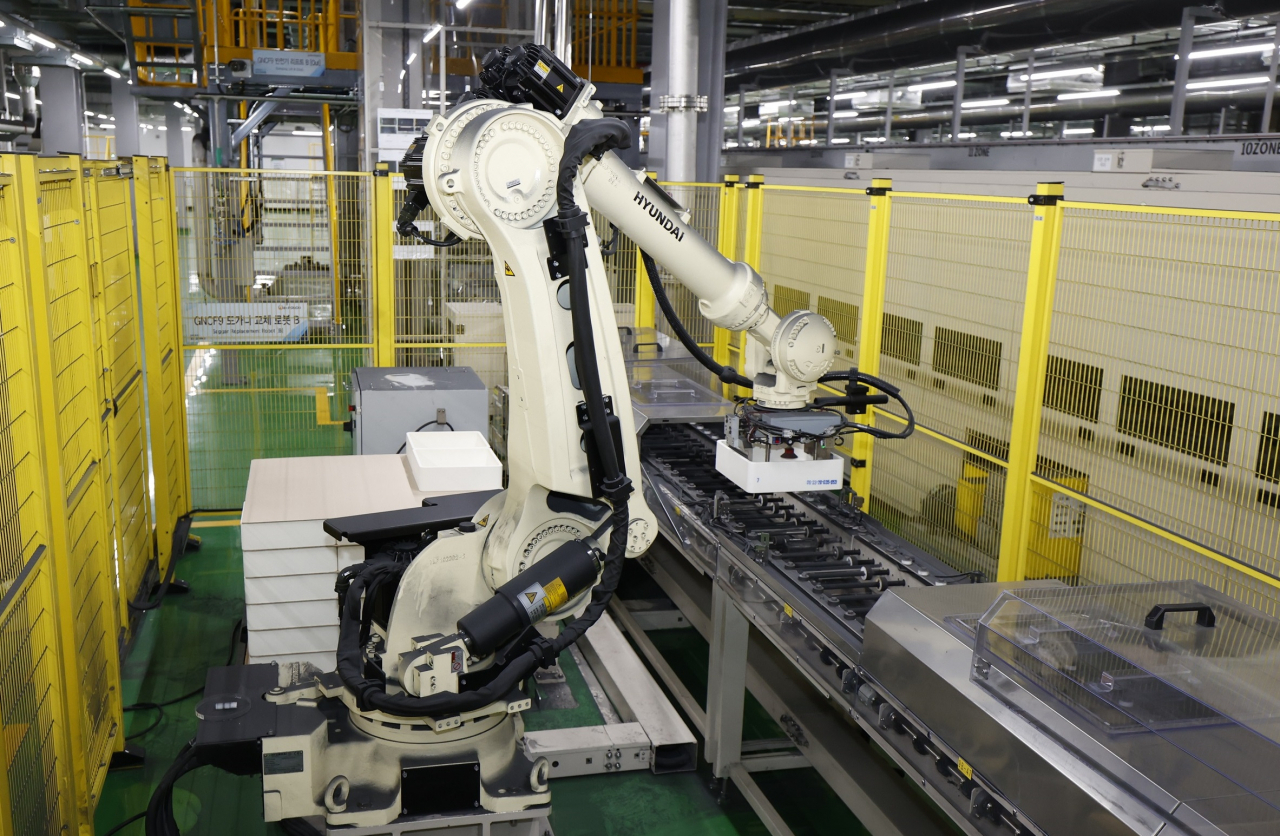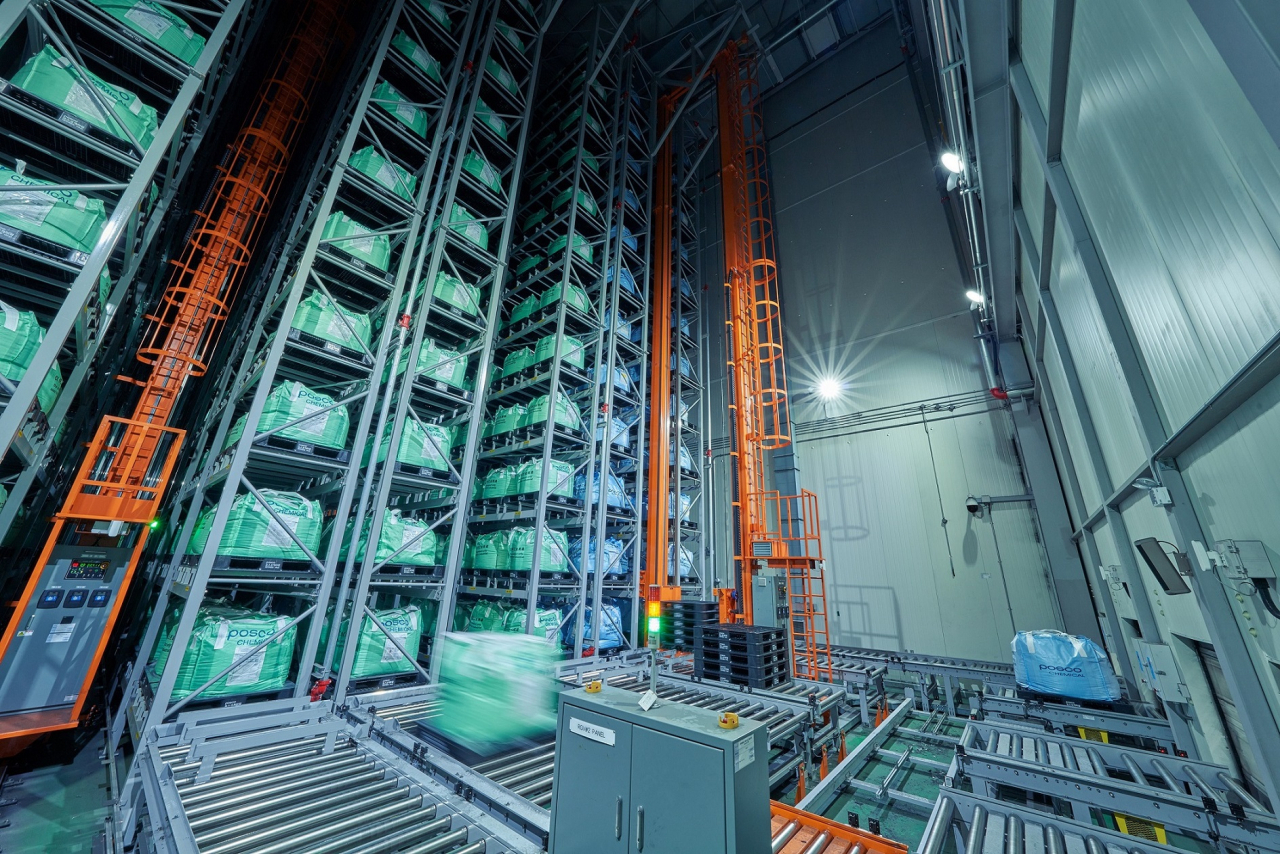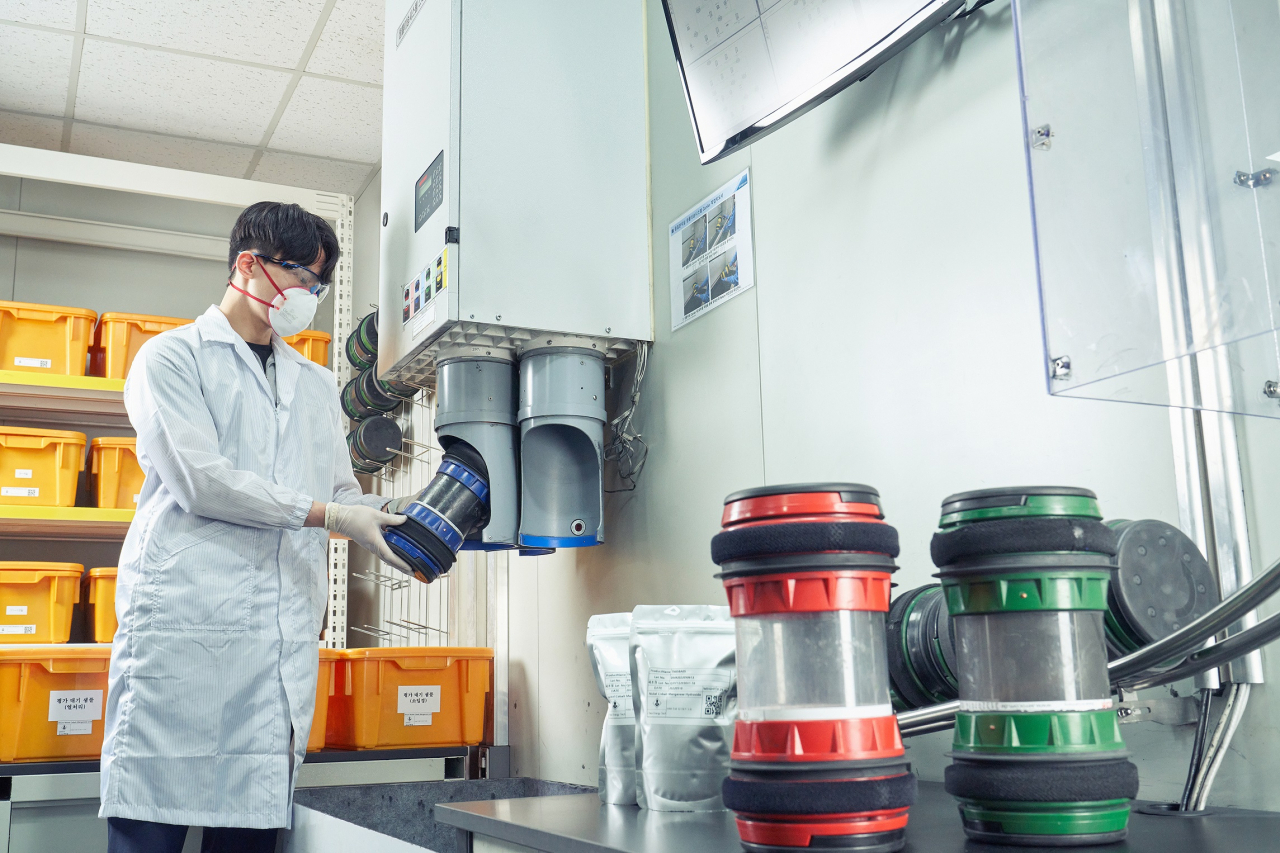[From the Scene] Posco Future M automates as it eyes cathode crown
By Kan Hyeong-wooPublished : Feb. 25, 2024 - 15:52

GWANGYANG, South Jeolla Province -- Safety goggles, helmets and dust masks were waiting on the desks in the auditorium at Posco Future M’s secondary battery materials complex in Gwangyang, South Jeolla Province, Thursday. After a brief introduction of the world’s largest cathode plant, a group of reporters equipped with safety gear headed to the Gwangyang Cathode Plant2.
Asked to wear disposable overshoes, the visitors were greeted with an air shower before they could enter the cathode production facility. The air shower, which lasts about 15 seconds, removes dust and other particles to maintain a contaminant-free environment. Site operators underlined the importance of keeping the production facility at cleanroom standards of decontamination to ensure the best quality cathode products.
Inside the facility, cathode production lines and saggars stretched as far as the eye could see. Saggars are ceramic containers used for the combination of precursors and lithium to produce cathodes. It takes about three days to produce the final products of nickel, cobalt, manganese and aluminum, or NCMA, cathodes and nickel, cobalt and aluminum, or NCA, cathodes.
Kim Dae-wan, vice plant leader at Gwangyang Cathode Plant2, pointed out how processing has become more effective with the introduction of robotics to the workplace.
“Human staff used to replace the saggars beforehand but now robot arms have been implemented to remove the saggar waste,” said Kim.
“Because we replace saggars on a mass scale, using the robot arms is much more efficient.”

Logistics inside the plant are also automated, reporters saw as the company guided them to the warehouse. The ceiling of the warehouse was much higher than that of the cathode production site.
According to Kim, the materials stocked at the warehouse are delivered to each destination upon individual request. The automated cranes would pick up the heavy bags and place them on self-guided vehicles to transport the requested materials.
The reporters then were taken to a quality control building where the company once again showed off the level of automation throughout the process.
An Ki-hyun, section leader at Gwangyang Cathode Material Quality Section, explained that the facility’s automated transport of samples used for a quality check has a total transfer line of over 1 kilometer with 12 stations.
“We can send the samples to wherever we want in less than a minute,” said An.
“Because we have to check between 300 to 500 samples every day, the fast delivery has improved efficiency.”

On top of the automated sample transfer, the facility had an automated assessment process for quality control monitoring. The whole system worked like a robot-staffed science lab, as the automated arms kept moving the samples and conducting automatic quality tests.
With a 1.26 trillion won ($948 million) investment, Posco Future M completed the construction of the two cathode plants in Gwangyang in November 2022. The plants are regarded as the single largest cathode production site with a combined annual capacity of 90,000 tons, which is enough to power 1 million electric vehicles running on a 60 kilowatt-hour battery.
Posco Future M has secured cathode contracts worth about 106.3 trillion won with LG Energy Solution, Samsung SDI and Ultium Cells, a US-based joint venture between LG Energy Solution and General Motors as well as an undisclosed client. The deals, which include the supply of NCA, NCMA, NCM cathodes and cathodes for energy storage systems, run between 2022 at the earliest to as late as 2033.
The company currently operates four cathode production footholds -- three in Korea and one in China -- with an annual capacity of 155,000 tons. It aims to expand its global production through more than a sixfold jump to reach the cathode production of 1 million tons per year in 2030 to take the lead in the global EV battery materials supplier market.




















![[Today’s K-pop] Treasure to publish magazine for debut anniversary](http://res.heraldm.com/phpwas/restmb_idxmake.php?idx=642&simg=/content/image/2024/07/26/20240726050551_0.jpg&u=)